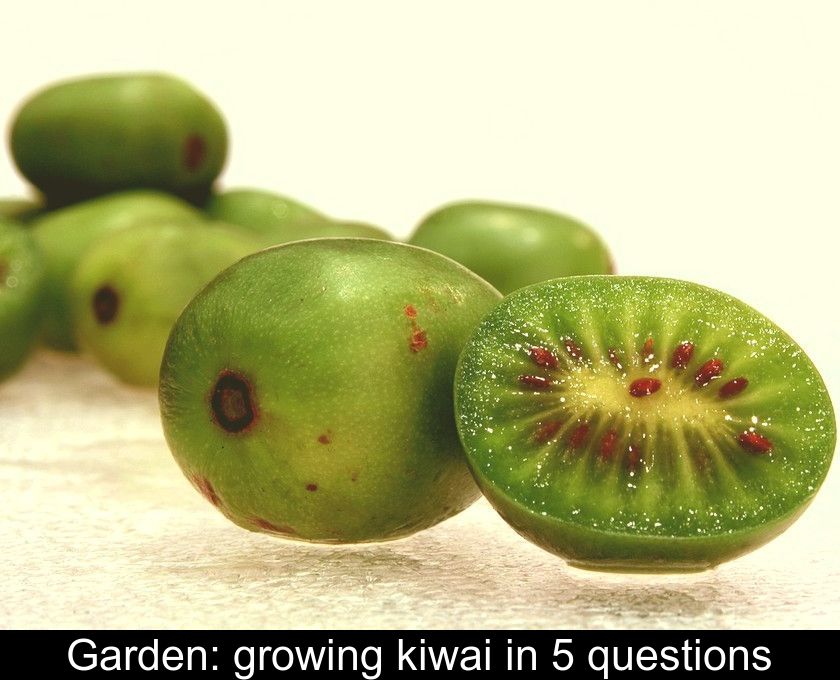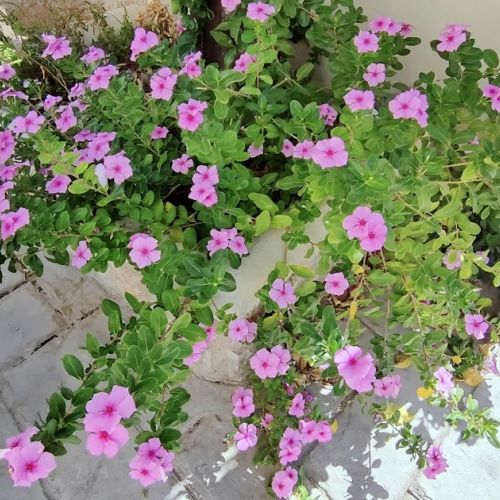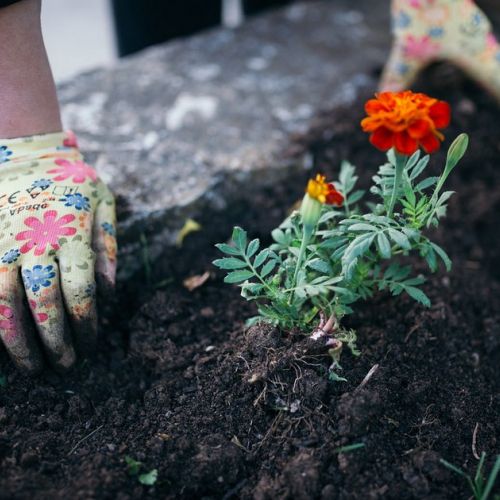Garden: Growing Kiwai In 5 Questions
Have you heard of the kiwifruit also called baby kiwi or Actinidia arguta? This small fruit, cousin of the kiwi, is a mine of vitamin C and polyphenols. Good news for those who want to make a cure: this mini kiwi is rather easy to cultivate in our latitudes!
1- What are the particularities of kiwai?
The kiwai is the fruit of the Actinidia arguta vine, a plant in the Actinidiaceae family (the same family as the kiwi). It is a climbing plant that can grow up to 8 m in length.
This perennial plant native of Japan, China and Korea carries deciduous leaves of oval shape and dark green color. The leaves are 10 to 12 cm long and have silky teeth.
The fragrant and highly melliferous flowers appear in June. They measure 2 cm in diameter and are grouped in threes.
Please note: since this plant is dioecious, male and female plants must be planted to obtain flowering and fruit.
The fruit of Actinidia arguta is much smaller than a typical kiwi. It is actually nicknamed baby kiwi or kiwi berry. It is an oblong berry about 2.5 cm long with a smooth yellow-green skin.
Another difference with the kiwi is that this perennial plant is much more resistant to cold down to -25°C. This feature has earned it the nicknames hardy kiwi and Siberian kiwi.
The flesh of the fruit can be green or red, as is the case for the varieties Actinidia arguta 'Geneva' and Actinidia arguta 'Ken's red'.
2- When to plant the kiwai ?
The rusticity of the kiwai is an asset to grow this vitamin-rich berry in the open ground in our latitudes.
It is possible to plant Actinidia arguta in spring or fall and have a harvest 2 or 3 years later. In colder regions, prefer a spring planting.
It is also possible to multiply this plant by sowing under cold frame (in spring) or by cuttings by operating as you wish:
- semi-woody cuttings in August
- woody cuttings from November to January.
3- Where to plant the kiwai?
If you're wondering where to plant a baby kiwi in your garden, know that this climbing plant enjoys a sunny to semi-shady exposure and shelter from the wind.
Provide it with humus-rich, light and well-drained soil. Beware: this plant fears stagnant humidity and limestone! It is therefore recommended to provide a bed of gravel at the bottom of the planting hole.
Actinidia arguta being a dioecious plant, it is necessary to plant together at least one male and 4 or 5 female feet spaced 3 to 4 meters apart.
To note: if you don't have enough room in your garden to install several feet, choose the only self-fertilizing kiwai variety: the Kiwai 'Issai'.
Since it is a voluble vine, this plant should also be trellised on a support such as a pergola, arbor or simple wire mesh.
4- How to maintain the kiwai ?
Maintenance of the Siberian kiwifruit is fairly easy. In summer, regular watering may be necessary, once or twice a week in hot weather.
Adding a layer of mulch to the base of the plant is also a good idea to keep the soil cool in summer.
In winter, do a two-eye pruning on twigs that have set fruit and a two-thirds pruning on the remaining twigs.
This perennial climber does not pose too many problems for the gardener because it is not afraid of the cold or pests.
5- When to harvest the kiwai?
If you're wondering why your kiwai isn't bearing fruit, be patient! This climbing plant takes an average of 2-3 years to produce its first crop.
Baby kiwis are harvested in the fall, usually in September and October.
Unlike the classic green kiwi, these small, smooth fruits are eaten with the skin. Harvest them as you need them and eat them right away to fill up on not only vitamin C but also polyphenols and minerals like potassium, magnesium, calcium and iron!
If you want to keep them a little longer (one to two weeks maximum), you can pick them a little before ripening. In fact, these funny little kiwis continue to ripen after harvest...
Even if these little fruits can be cooked in compote, I advise you to eat them fresh and raw, added whole in a fruit salad and in smoothie to fully benefit from their nutritional virtues.






